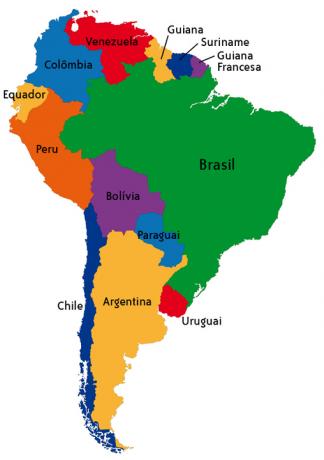Capital: Tyrant
Territorial Extension: 28,748 Km2
Climate: Mediterranean
Population (2009): 3,155,271 inhabitants
Demographic density: 109 inhab/Km2
Religion: Islam 38.8%, Christianity 35.4% (Catholics 16.8%, Orthodox 16.1%, others 2.1%), no religion 16.6%, Atheism 9%, Bahaism 0.2%.
Language: Albanian
Currency: Lek
HDI: 0.719
Life expectancy at birth: 76.3 years
GDP: US$ 10,718 million
Albania is a country that is part of the European continent which is located on the Balkan Peninsula and borders the following countries: Greece, Macedonia, Serbia and Montenegro.
Its territory corresponds to ancient Illyria, a coastal region that in the 10th century BC Ç. it was occupied by Indo-European speaking peoples. These first occupants maintained contacts with peoples of Macedonia and Greece. However, their culture was not influenced by these neighboring communities.
In the IV century; Ç. an invasion in the region on the part of the Macedonian peoples occurred, and in century II a. Ç. was occupied by the Romans, who incorporated the Albanian territory into the Byzantine Empire, in 395 d. Ç..
In the 15th century, the Turks dominated the region. The occupation brought about changes in the customs of the Albanian population through arbitrary measures. Through an imposition, Islam was considered the official religion of the country and young people were forced to serve in the sultan's army.
After several attempts at liberation, Turkish rule came to an end after more than four hundred years. On November 28, 1912, Albania's independence was proclaimed, recognized in 1913 by the Congress of London. However, the province of Kosovo, which had an Albanian population of 800,000 inhabitants, was definitively added to Serbia.
The invasions of Albania did not cease, during the First World War (1914-1918), the country was again occupied and only had its independence regained in 1918, but only in 1920 did the invading countries recognize independence and withdraw their troops Of region.
During World War II (1939-1945), a new occupation took place in the country. Italy, presided over by Mussolini, invaded Albanian territory. However, in 1944, the Albanians regained power. The communist Enver Hoxha, one of the main responsible for the resistance movement to the Italian occupation, became the country's president. He implemented a dictatorial system and ruled Albania until 1985, the year of his death.
The political opening took place between 1990 and 1992, when the multi-party system was implemented, with popular elections. After several economic and social crises, orthodox communism is no longer the current political system in the country.
Currently, with the political opening, Albania is trying to recover the economic consequences generated by its isolation from other nations. It is the poorest country on the European continent.
Do not stop now... There's more after the advertising ;)
By Wagner de Cerqueira and Francisco
Graduated in Geography
Brazil School Team
Countries of the world - geography - Brazil School
Would you like to reference this text in a school or academic work? Look:
FRANCISCO, Wagner de Cerqueira e. "Albania"; Brazil School. Available in: https://brasilescola.uol.com.br/geografia/albania.htm. Accessed on June 28, 2021.

